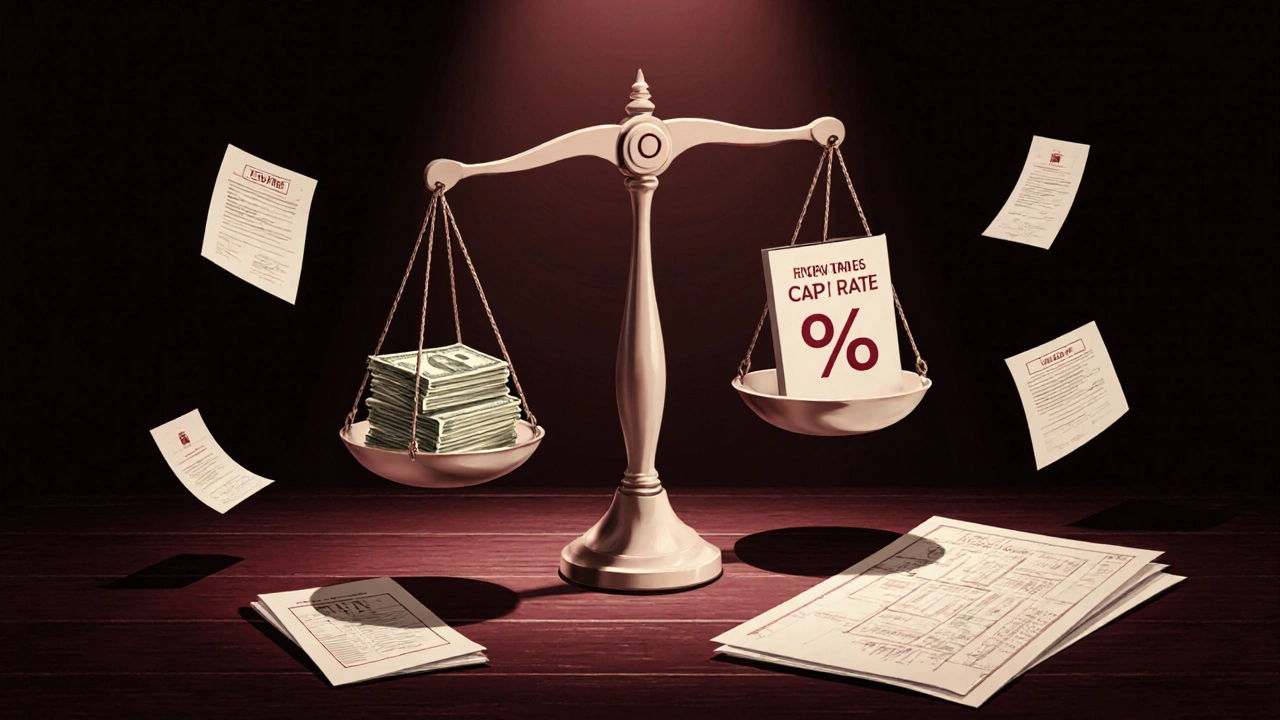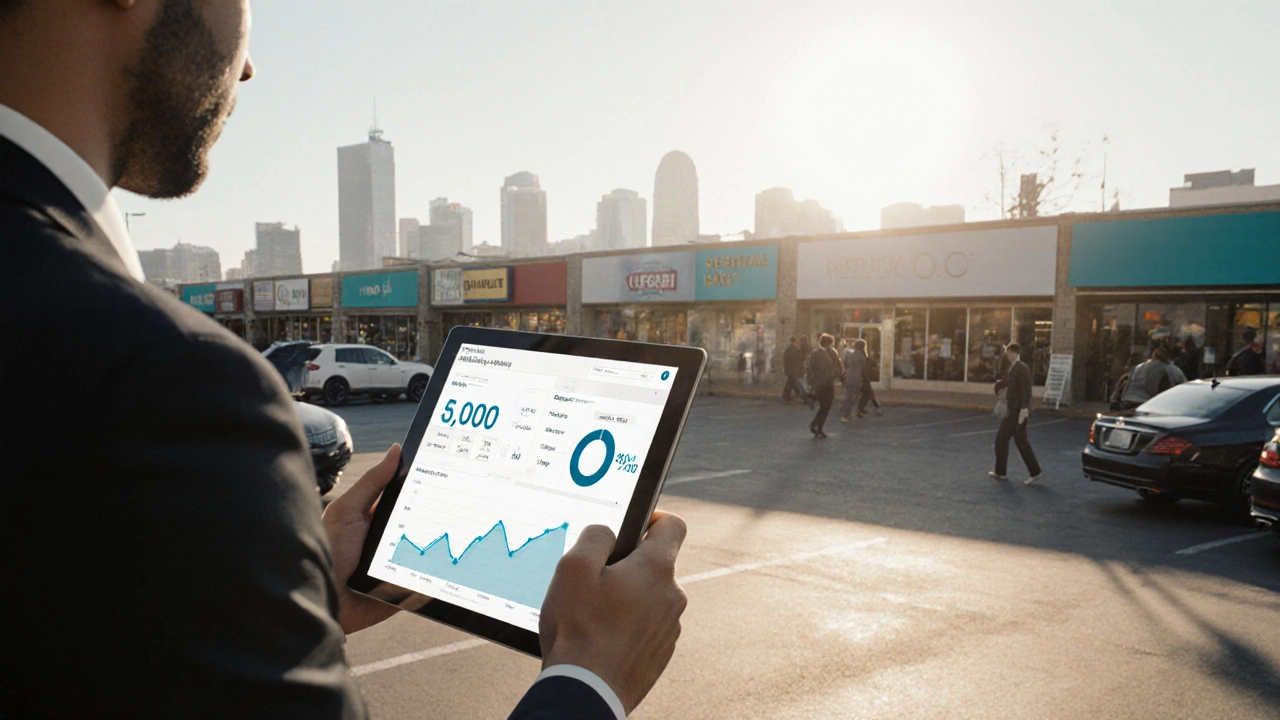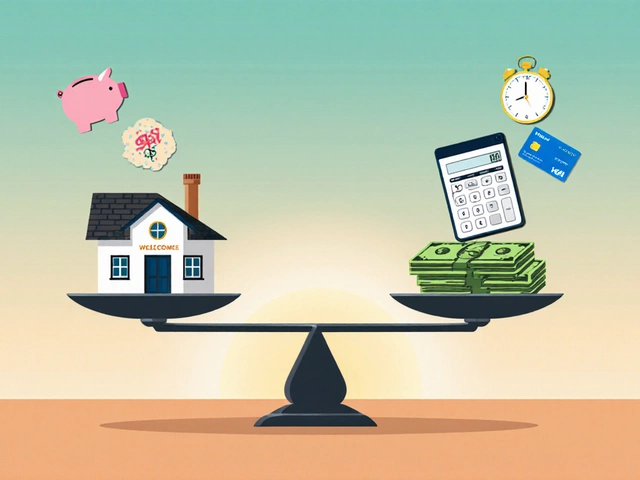Commercial Property Value Calculator
Calculate your property's estimated value using the income approach. Enter your net operating income (NOI) and local cap rate to see the estimated value.
Estimated Property Value:
$0
Result based on NOI ÷ Cap Rate
When you're selling a commercial property, knowing its value isn’t about how fancy the lobby looks or how many parking spots it has. It’s about money-specifically, how much cash the building generates and what buyers are willing to pay for that cash flow. Many owners guess their property’s worth based on what a neighbor sold for, but that’s like judging a car’s value by its color instead of its engine. Commercial property value is calculated using proven methods grounded in real financial data, not opinions.
What Drives Commercial Property Value?
Unlike homes, which are often bought for personal use, commercial properties are bought as investments. A buyer doesn’t care if the office space has nice lighting-they care if it brings in $200,000 a year in rent after expenses. The core driver of value is net operating income (NOI). This is the total rent collected minus all operating costs: property taxes, insurance, maintenance, management fees, utilities, and repairs. It does not include mortgage payments, depreciation, or capital improvements. That’s key. NOI tells you how much cash the property produces on its own.
For example, a retail strip center brings in $500,000 in annual rent. But it costs $180,000 to maintain, pay taxes, insure, and manage. That gives you an NOI of $320,000. That number is the foundation for every valuation method used in commercial real estate.
The Income Approach: The Standard Method
The most trusted way to value commercial property is the income approach. It’s simple: divide the NOI by a market-driven rate called the capitalization rate, or cap rate. The formula is:
Property Value = NOI ÷ Cap Rate
Cap rates aren’t made up. They’re pulled from actual sales data in your area. If similar buildings in your city sold recently at a 6% cap rate, that’s your benchmark. So if your property has an NOI of $320,000 and the market cap rate is 6%, your estimated value is $5.33 million ($320,000 ÷ 0.06).
Cap rates vary by location, property type, and tenant quality. A medical office building with a 10-year lease from a hospital chain might trade at a 4.5% cap rate because it’s low-risk. A standalone retail store with a tenant who just signed a one-year lease might trade at 8% because the risk is higher. The better the tenants and the longer the leases, the lower the cap rate-and the higher the value.
Why Cap Rates Change Between Markets
Cap rates aren’t the same everywhere. In downtown Chicago, a Class A office building might sell at a 5% cap rate. In a smaller Midwest city, the same building might trade at 7%. Why? Because investors demand a higher return for taking on more risk in less stable markets. Interest rates also play a role. When the Fed raises rates, cap rates tend to rise too, because investors can get safer returns elsewhere, like bonds. That pushes commercial property values down.
Don’t rely on national averages. You need local comps. Talk to brokers who specialize in your property type. Look at recent sales of similar buildings-same size, same tenant profile, same location. That’s the only way to get a real cap rate for your asset.
Other Valuation Methods: When They Apply
While the income approach is standard, other methods can help in specific cases.
- Sales Comparison Approach: Compares your property to similar ones that sold recently. Useful when there’s a lot of recent activity, like in a hot industrial market. But it’s risky if the comps aren’t truly comparable-say, you’re comparing a 20-year-old warehouse to a brand-new one with solar panels.
- Cost Approach: Adds the value of the land to the cost of rebuilding the structure, then subtracts depreciation. Often used for unique properties like churches or government buildings where there’s little rental data. Rarely used for typical office or retail spaces because it ignores income potential.
Most appraisers use the income approach as the primary method, then cross-check with sales data to confirm. If the two methods disagree by more than 10%, something’s off-either the NOI is wrong, or the cap rate isn’t accurate.

How Tenant Leases Impact Value
Leases aren’t just contracts-they’re financial assets. A tenant who pays rent on time, signs a 10-year lease, and covers all operating expenses (triple-net lease) makes your property worth significantly more than one with a month-to-month tenant who doesn’t pay utilities.
For example, two identical buildings each have an NOI of $300,000. One has three tenants with leases expiring in 12 months. The other has five tenants with leases averaging 7 years left. The second building will sell for a higher price because the income is predictable. Buyers pay a premium for stability.
Also watch for lease expirations. If 40% of your tenants are due to leave in the next two years, that’s a red flag. Buyers will discount the value to account for potential vacancy and re-letting costs. That’s called a lease-up risk discount.
What Happens If You Overestimate NOI?
One of the biggest mistakes owners make is inflating their NOI. They forget to include repairs, skip maintenance costs, or assume rent increases that won’t happen. For example, adding $50,000 in projected rent hikes that aren’t backed by market data will make your property look $1 million more valuable than it is.
Buyers and lenders verify every line item. They’ll ask for 3 years of financial statements, rent rolls, and expense reports. If your numbers don’t match the documents, your deal falls apart. Always use actual, audited numbers. Don’t guess.
How to Prepare for a Commercial Property Valuation
If you’re planning to sell, here’s what you need to do before you call an appraiser:
- Collect 3 years of operating statements (income and expenses).
- Get a current rent roll showing tenant names, square footage, lease terms, and rent amounts.
- Review all leases for renewal options, rent bumps, and tenant responsibilities.
- Fix major deferred maintenance-roof leaks, HVAC issues, broken elevators. Buyers will deduct these costs.
- Know your market. What’s the average cap rate for similar properties sold in the last 6 months?
Organized, accurate data builds trust. It speeds up the process and prevents last-minute surprises.

Common Mistakes That Lower Your Property’s Value
- Using the wrong cap rate-applying a downtown rate to a suburban property.
- Including mortgage payments in NOI-this is a classic error.
- Ignoring vacancy rates-assuming 100% occupancy when the market average is 85%.
- Not accounting for tenant improvements or leasing commissions-these are real costs buyers factor in.
- Waiting until the last minute to get an appraisal-waiting until you have an offer reduces your negotiating power.
Fixing these issues before listing can add 10-20% to your sale price.
When to Hire a Professional Appraiser
You don’t need to hire an appraiser for every small property, but if you’re selling for over $1 million, or if you’re using a commercial loan, you’ll need one. A licensed appraiser (MAI or SRPA designation) follows USPAP standards and provides a legally defensible report. Banks require them. Serious buyers rely on them.
A good appraiser doesn’t just plug numbers into a formula. They visit the property, interview tenants, analyze local market trends, and explain why their conclusion makes sense. Their report becomes part of your marketing package.
Final Thought: Value Is What Buyers Will Pay
At the end of the day, commercial property value isn’t about what you think it’s worth. It’s about what a well-informed buyer is willing to pay for the income it produces. The math is clear: higher NOI + lower cap rate = higher value. But the real skill is in presenting your property’s income stream accurately, transparently, and confidently.
Don’t overcomplicate it. Focus on clean financials, strong tenants, and market data. That’s how you get the best price.
What’s the difference between NOI and cash flow?
NOI (Net Operating Income) is the property’s income after operating expenses but before mortgage payments. Cash flow is what’s left after you pay the loan. NOI determines value; cash flow determines your personal return.
Can I use the property’s purchase price to calculate its current value?
No. The original purchase price is irrelevant. Value is based on current income and market conditions. A property bought for $3 million in 2018 could be worth $5 million today if rents rose and cap rates fell-or worth $2.5 million if the neighborhood declined.
How do I find the right cap rate for my property?
Look at recent sales of similar properties in your area. Commercial brokers, CoStar, and Crexi provide this data. Ask for at least five comparable sales from the last 12 months. Average their cap rates. Don’t rely on online calculators-they use national averages that rarely fit your local market.
Does a new roof or HVAC upgrade increase property value?
Only if it reduces future expenses or helps retain tenants. A new roof doesn’t directly increase NOI unless it prevents costly leaks that lead to tenant complaints or rent abatements. Upgrades that improve tenant retention or reduce operating costs can boost value indirectly.
What if my property has mixed-use tenants (retail + office)?
Break down the NOI by use type. Retail and office spaces often have different cap rates. For example, retail might trade at 6.5% while office trades at 5.8%. Calculate the value for each portion separately, then add them together. This gives a more accurate picture than treating the whole building as one.





